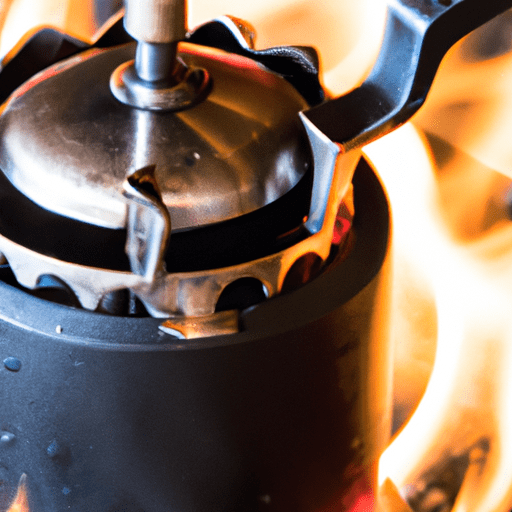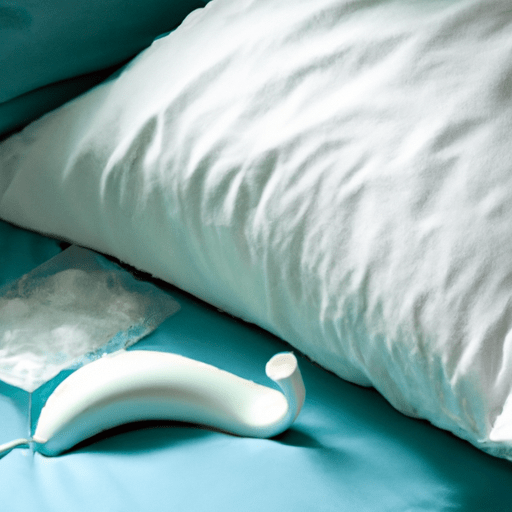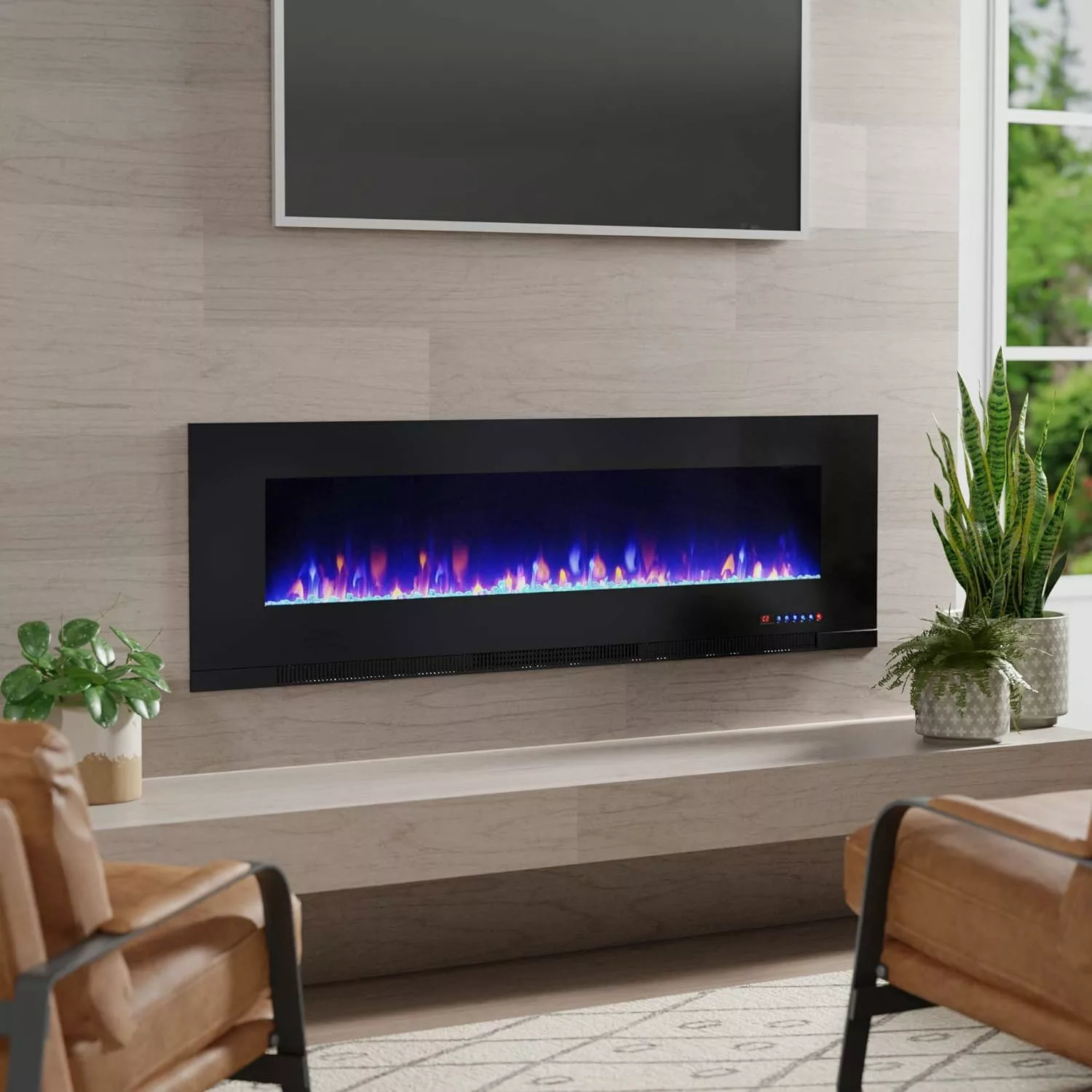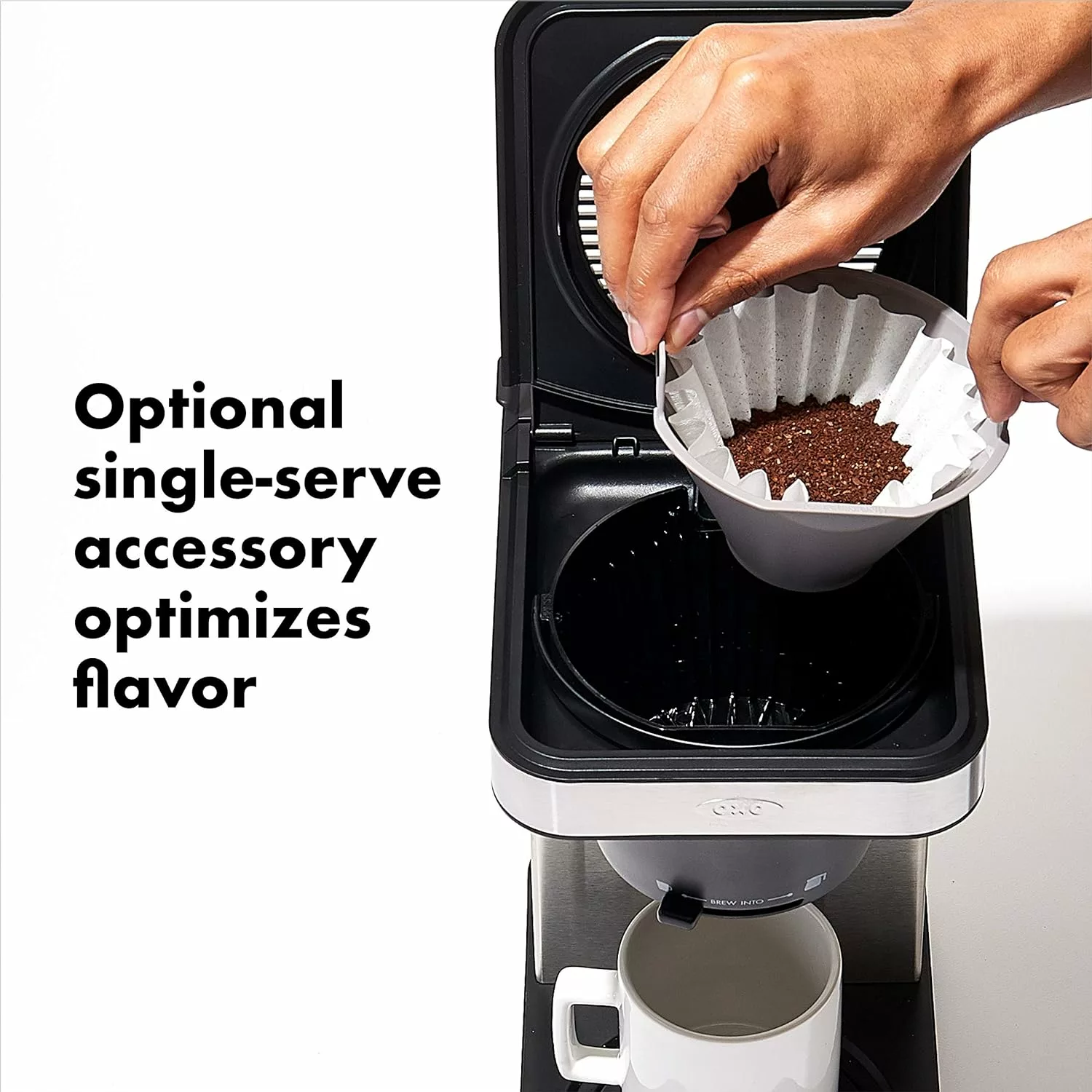If you find yourself in a coffee emergency with no filter in sight, fear not! This article explores alternative methods of brewing coffee without a filter, ensuring that you never have to go without your morning cup of joe. Whether you’re camping in the wilderness or simply forgot to buy filters, we’ve got you covered with creative solutions to satisfy your caffeine cravings. So grab your coffee beans, get ready to explore some unconventional techniques, and prepare to be pleasantly surprised by the results.
Understanding the Importance of Coffee Filters
The role of coffee filters in traditional brewing
Coffee filters play a crucial role in traditional brewing methods by separating the coffee grounds from the liquid, resulting in a clean and smooth cup of coffee. When hot water is poured over the coffee grounds, the filter traps the small particles and oils, allowing only the brewed liquid to pass through. This ensures that you can enjoy a clear and sediment-free cup of coffee.
Understanding the coffee brewing dynamics
To better understand the importance of coffee filters, it’s essential to grasp the brewing dynamics. During the brewing process, hot water extracts the flavors and aroma from the coffee grounds. However, without a filter, these extracted particles can find their way into your cup, resulting in a gritty and unpleasant experience.
Reasons to brew coffee without filters
While coffee filters are widely used and essential for traditional brewing methods, there are instances where you may want to explore filter-free coffee brewing techniques. Some reasons to brew coffee without filters include:
-
Convenience: In situations where you don’t have access to filters, such as during camping trips or power outages, knowing alternative brewing methods can come in handy.
-
Experimentation: Brewing without filters allows you to explore different flavors and textures in your coffee. The absence of a filter can give your coffee a fuller body and a more robust taste.
Coffee Brewing Glossary
Key terminologies in coffee brewing
To navigate the world of coffee brewing, it’s essential to familiarize yourself with key terminologies. Here are a few common terms you may come across:
-
Extraction: The process of dissolving soluble compounds, like flavor and aroma, from coffee grounds into hot water when brewing.
-
Brew Ratio: The ratio of coffee to water when brewing. It helps determine the strength and taste of your coffee.
-
Bloom: The initial stage of the brewing process, where hot water is poured over the coffee grounds to release trapped CO2 gas.
Differentiating between various brewing methods
Coffee brewing methods can vary widely, each offering a unique flavor profile and brewing experience. To explore alternative brewing methods without filters, it’s crucial to understand how they differ. Methods like the cowboy method, French press, and Turkish coffee each have their own techniques and characteristics, which we’ll delve into in the following sections.

This image is property of images.pexels.com.
Cowboy Method of Brewing Coffee
The origin of the cowboy coffee brewing method
The cowboy coffee brewing method traces its roots back to the days of the Wild West. Cowboys on the trail faced a lack of resources, including coffee filters. As a result, they developed a simple and effective method to brew their coffee without filters.
Detailed steps to brew coffee using the cowboy method
To brew coffee using the cowboy method, follow these steps:
- Boil water in a pot or kettle.
- Add coarsely ground coffee to the boiling water.
- Let the mixture simmer for a few minutes.
- Remove the pot from heat and let it sit for a couple of minutes to allow the coffee grounds to settle.
- Slowly pour the brewed coffee into your cup, ensuring you leave the majority of the grounds behind.
Tips to brew the best cowboy coffee
Brewing cowboy coffee requires some finesse to achieve a flavorful and smooth cup. Here are a few tips to help you brew the best cowboy coffee:
-
Choose the right coffee grind: Coarsely ground coffee works best for cowboy coffee as it allows the grounds to settle more effectively.
-
Control the brew time: Adjust the simmering time according to your taste preferences. A shorter brew time will result in a milder coffee, while a longer brew time will yield a stronger flavor.
French Press Method of Brewing Coffee
Understanding the French press brewing method
The French press is a popular brewing method known for its simplicity and ability to extract robust flavors. It consists of a cylindrical pot equipped with a plunger and a fine metal mesh filter. The French press allows for direct contact between the coffee grounds and water, resulting in a full-bodied cup of coffee.
How to brew coffee using a French press
Brewing coffee using a French press involves the following steps:
- Heat water to the desired temperature and coarsely grind your coffee beans.
- Add the coffee grounds to the French press.
- Pour hot water over the coffee grounds, ensuring all the grounds are saturated.
- Let the coffee steep for a few minutes, usually around 4-5 minutes.
- Slowly press the plunger down, separating the brewed coffee from the grounds.
- Pour the coffee into your cup and enjoy.
Tips for achieving the best coffee from a French press
To enhance your French press brewing experience, keep the following tips in mind:
-
Use the correct water temperature: The ideal water temperature for French press brewing is around 195-205°F (90-96°C). Avoid using boiling water, as it can result in over-extraction and a bitter taste.
-
Grind your coffee right before brewing: For optimal flavor extraction, grind your coffee beans just before you plan to brew. Coarsely ground coffee is ideal for French press brewing as it prevents excessive sediment in the cup.

This image is property of images.pexels.com.
Making Turkish Coffee Without a Coffee Filter
The cultural significance of Turkish coffee
Turkish coffee holds a significant place in the rich cultural heritage of Turkey and some Middle Eastern countries. It is a traditional method of brewing coffee that has been passed down through generations. Turkish coffee is known for its strong, concentrated flavor and unique brewing technique.
How to brew Turkish coffee
Brewing Turkish coffee without a coffee filter requires a special brewing pot called a cezve. Here’s how you can make Turkish coffee:
- Grind your coffee beans into a fine powder, almost like powdered sugar.
- Measure the desired amount of cold water into the cezve. Use the traditional Turkish coffee cup, usually around 1.5 ounces (44ml), as a measurement.
- Add the Turkish coffee grounds to the cezve, usually one heaping teaspoon per cup.
- Stir the mixture gently to ensure the coffee grounds are fully saturated.
- Place the cezve over low heat and slowly bring the coffee to a boil. Be careful not to let it boil over.
- As the coffee begins to heat, a foamy layer called “kaymak” will form on top. Just before it boils over, remove the cezve from the heat source.
- Allow the coffee to sit for a moment to let the grounds settle at the bottom.
- Pour the coffee slowly into small cups, ensuring you leave the grounds behind.
Tips for making perfect Turkish coffee
Achieving the perfect cup of Turkish coffee requires attention to detail. Consider the following tips to make the best Turkish coffee:
-
Choose the right coffee grind: Turkish coffee requires an extra-fine grind to ensure proper extraction. If you don’t have access to a Turkish coffee grinder, it’s best to use pre-ground Turkish coffee for the authentic taste.
-
Patience is key: Turkish coffee brewing is a slow and meditative process. Be patient and avoid rushing through the steps. The slow extraction helps create the unique flavor profile that Turkish coffee is known for.
The Percolator Method of Brewing Coffee
What is a coffee percolator and how it works
A coffee percolator is a brewing device that uses gravity and circulating hot water to extract flavors from coffee grounds. It consists of a pot, a chamber for the coffee grounds, and a central tube that siphons the brewed coffee back into the pot. As the water boils, it is forced up the central tube, traveling over the coffee grounds and then dripping back down into the pot.
Steps to brew coffee using a percolator
To brew coffee using a percolator, follow these steps:
- Fill the percolator’s base with water up to the desired level.
- Place the coffee grounds in the designated chamber or basket.
- Assemble the percolator by attaching the chamber/basket to the base and placing the lid on top.
- Heat the percolator on a stovetop or camping stove, allowing the water to boil.
- Monitor the percolation process and adjust the heat if needed.
- Once you achieve the desired strength, remove the percolator from the heat source.
- Serve the brewed coffee from the percolator, either directly into cups or by pouring it into a separate container.
Tips for brewing coffee with a percolator
Brewing coffee with a percolator can be a rewarding experience if done right. Consider these tips to enhance your percolator brewing:
-
Water temperature control: Pay attention to the water temperature during the percolation process. Boiling the water excessively can lead to over-extraction and bitterness.
-
Monitor the brewing time: Depending on your preferences, you may need to adjust the brewing time. Experiment with shorter or longer percolation times to achieve the desired strength and flavor.

This image is property of images.pexels.com.
Tips and tricks for brewing coffee without a filter
Do’s and Don’ts when brewing coffee without filters
When brewing coffee without filters, it’s essential to keep certain do’s and don’ts in mind:
Do’s:
- Use the appropriate coffee grind:
- For cowboy coffee and Turkish coffee, a coarser grind is recommended.
- For French press and percolator brewing, a coarse to medium-coarse grind works best.
- Slowly pour your brewed coffee into cups to minimize the transfer of coffee grounds.
Don’ts:
- Use overly fine coffee grounds, as they can result in excessive sediment and a bitter taste.
- Rush the brewing process. Take your time to ensure proper extraction and avoid a gritty cup of coffee.
How to prevent coffee ground sludge
To prevent coffee ground sludge while brewing without filters, consider the following techniques:
-
Let the coffee grounds settle: After brewing, give the coffee a few moments to allow the grounds to settle at the bottom. This will make it easier to pour the brewed coffee without disturbing the sediment.
-
Use a gentle pouring technique: When transferring the brewed coffee to cups or containers, pour slowly and avoid agitating the sediment. Tilt the vessel slightly to separate the brewed coffee from the sediment.
Methods to approximate appropriate brewing time
In the absence of filters, determining the appropriate brewing time can be challenging. However, you can rely on the following methods to approximate brewing time:
-
Visual cues: Observe the coffee as it brews and look for signs such as changes in color or the formation of a foamy layer. These visual cues can give you an indication of when the coffee is ready to be served.
-
Personal preference: Experiment with different brewing times to find your ideal strength and flavor. Some coffee lovers prefer a shorter brewing time for a milder cup, while others enjoy a longer brewing time for a bolder taste.
The Health Perspective of Filterless Brewing
The difference between filtered and non-filtered coffee
Filtered coffee refers to coffee brewed using a filter that separates the grounds from the liquid. Non-filtered coffee, on the other hand, allows the coffee grounds to come in direct contact with the water during brewing. This distinction affects the taste, texture, and health implications of the final cup of coffee.
Health implications of brewing coffee without filters
Brewing coffee without filters can have certain health implications due to the presence of coffee oils and minute coffee particles. These oils contain compounds known as diterpenes, which have been associated with increased levels of LDL cholesterol. However, the impact of these compounds on health is still a topic of debate among experts.
It’s important to note that the health effects of non-filtered coffee are minimal when consumed in moderation as part of a balanced diet. If you have concerns about cholesterol levels or other health factors, it may be best to consult with a healthcare professional.
How to brew healthy coffee without filters
If you prefer brewing coffee without filters but want to minimize any potential health risks, here are a few tips:
-
Choose high-quality coffee beans: Opt for arabica beans, which are generally lower in diterpenes compared to robusta beans.
-
Limit your consumption: Enjoy non-filtered coffee in moderation and as part of a varied and balanced diet.
Cleaning and Maintenance of Non-filter Coffee Brewing Utensils
Proper care for your coffee brewing utensils
To ensure the longevity and performance of your non-filter coffee brewing utensils, it’s important to properly care for them. Here are some general tips:
-
Rinse immediately after use: Rinse the utensils thoroughly with warm water immediately after use to prevent the coffee oils and residue from drying and becoming difficult to remove.
-
Avoid abrasive cleaners: Use mild dish soap or a specialized coffee equipment cleaner to clean your brewing utensils. Avoid using abrasive cleaners or scrubbing brushes that can damage the surfaces.
Cleaning process for filterless coffee brewing utensils
Specific cleaning processes may vary depending on the brewing method and utensils used. However, here’s a general cleaning process for non-filter coffee brewing utensils:
-
Discard the leftover coffee grounds and rinse the utensils with warm water to remove any loose residue.
-
Use a soft cloth or sponge to clean the interior and exterior surfaces of the utensils. Apply a small amount of mild dish soap if necessary.
-
Rinse thoroughly with warm water to remove any soap residue.
-
Allow the utensils to air dry completely before storing them to prevent the growth of mold or mildew.
Maintenance tips for prolonged use
To ensure prolonged use and optimal performance of your non-filter coffee brewing utensils, consider these maintenance tips:
-
Regular descaling: Depending on the brewing method, the utensils may accumulate mineral deposits over time. Descale the utensils periodically using a mixture of water and vinegar or a descaling solution to remove any build-up.
-
Replace worn-out parts: Keep an eye on the condition of the utensils, such as the plunger in a French press or the gasket in a percolator. Replace worn-out or damaged parts to maintain the functionality and effectiveness of the brewing utensils.
Filter-Free Coffee Brewing and Sustainability
The environmental impact of coffee making
The coffee-making process, including the use of disposable filters, can have a significant environmental impact. Disposable paper filters often end up in landfills, contributing to waste accumulation. Additionally, the production of paper filters requires resources like water and energy, which can further strain the environment.
How brewing without filters contributes to sustainable coffee consumption
By opting for filter-free coffee brewing methods, you can contribute to sustainable coffee consumption in the following ways:
-
Reduction in waste: Brewing without filters eliminates the need for disposable paper filters, reducing the amount of waste generated from coffee brewing.
-
Resource conservation: Filter-free brewing minimizes the use of resources like water and energy that would otherwise be required for the production and disposal of filters.
Making sustainable choices in coffee drinking habits
In addition to using filter-free brewing methods, you can make sustainable choices in your coffee drinking habits, such as:
-
Choosing sustainably sourced coffee beans: Look for certifications like Fairtrade, Rainforest Alliance, or Organic to ensure that the coffee you purchase has been produced responsibly.
-
Using reusable coffee filters: Invest in reusable filters made from materials like stainless steel or cloth. These filters can be easily cleaned and reused, further reducing waste.
-
Composting coffee grounds: Rather than disposing of coffee grounds in the trash, consider composting. Coffee grounds are rich in organic matter and can enhance the quality of your compost.
By adopting these sustainable choices, you can enjoy your cup of coffee while minimizing your environmental footprint.
In conclusion, understanding the importance of coffee filters is essential for achieving a pleasant and sediment-free cup of coffee through traditional brewing methods. However, there are various alternative methods available for brewing coffee without filters. From the cowboy method to the French press, Turkish coffee, and percolator brewing, each technique offers its own unique experience and flavor profile. It’s important to follow the recommended steps and tips for each method to achieve the best results.
While brewing without filters is convenient and allows for experimentation, it’s also vital to consider the health implications and take necessary precautions. Moderation, high-quality coffee beans, and proper brewing techniques can help ensure a healthy cup of coffee.
Maintaining and cleaning your non-filter coffee brewing utensils is crucial for prolonged use and optimal performance. By following proper care and maintenance practices, you can extend the lifespan of your utensils and continue enjoying filter-free coffee brewing.
Lastly, brewing coffee without filters can contribute to sustainable coffee consumption by reducing waste and conserving resources. By making sustainable choices in your coffee drinking habits and choosing responsible coffee sourcing, you can enjoy your daily dose of caffeine while minimizing your environmental impact.




